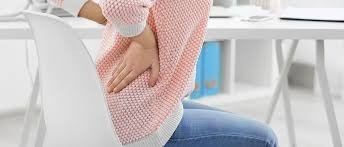
Low back pain.
Low back pain.
Low back pain is the most common diagnosis seen in many physical therapy clinics, and it affects nearly 85-90% of Americans at one time or another. It is the second leading cause of visits to a doctor, after the common cold. Low back pain is also the leading cause of lost time at work, and billions of dollars are spent each year diagnosing and treating low back pain.But, The good news is that most cases of low back pain are not serious and will respond well to conservative treatments such as treatment by a physical therapist.
Our treatment is a cost effective first choice in an era when all too often back pain is over-treated with narcotics or unhelpful imaging scans that lead to higher costs.
We are movement experts who treat pain through movement and exercise, hands-on care, and patient education.
Signs and Symptoms
The symptoms of low back pain vary a great deal. Your pain might be dull, burning, or sharp. You might feel it at a single point or over a broad area. It might be accompanied by muscle spasms or stiffness. Sometimes, it might spread into 1 or both legs.
There are 3 different types of low back pain:
- Acute – pain lasting less than 3 months
- Recurrent – acute symptoms come back
- Chronic – pain lasting longer than 3 months
Most people who have an episode of acute pain will have at least 1 recurrence. While the actual cause of low back pain isn't often known, symptoms usually resolve on their own. Psychosocial factors, such as self-confidence and a perceived ability to cope with disability, have been shown to be predictors of who might not recover from low back pain as expected. We used to believe the cause of low back pain was related directly to the tissues of our body, but are now understanding the condition to be more complex.
Although low back pain is rarely serious or life threatening, there are several conditions that may be related to your low back pain, such as:
- Degenerative disk disease
- Degenerative joint disease.
- Para spinal muscles strain.
- Lumbar spinal stenosis
- Fractures
- Herniated disk
- Disc bulge
- Osteoarthritis
- Osteoporosis
Most commone conditions:
- Mechanical LBP (most common)
- Myofascial LBP (very common)
- Radicular pain
- Neuropathic pain
- Sciatica
- Muscle Strain
- Disc Degeneration
- Bulge or Herniation
- Spinal Stenosis
- Muscle Strain, Tension, or dyscoordination
- Weakness. Ligaments or capsular Sprain
- Vertebral Sublaxation
- Postural, sports related and occupational issues.
How Is It Diagnosed?
At iMOVE, we will perform a thorough evaluation that includes:
- A review of your health history.
- Questions about your specific symptoms.
- A thorough examination that includes assessing the quality and quantity of your movements, and any movement behaviors that might put you at risk for delayed recovery.
- Tests to identify signs or symptoms that could indicate a serious health problem, such as broken bones or cancer.
- Assessment of how you use your body at work, at home, during sports, and at leisure.
How Can WE Help?
We can help you improve or restore mobility and reduce low back pain in many cases, without expensive surgery or the side effects of medications.
If you are having low back pain right now:
- Stay active, and do as much of your normal routine as possible (bed rest for longer than a day can actually slow down your recovery.)
- If your pain lasts more than a few days or gets worse, schedule an appointment to see us at iMOVE.
- Not all low back pain is the same, so your treatment should be tailored to for your specific symptoms and condition. Once the examination is complete, your physical therapist will evaluate the results, identify the factors that have contributed to your specific back problem, and design an individualized treatment plan for your specific back problem.
Treatments may include:
-
Manual therapy, including spinal mobilization or manipulation, to improve the mobility of joints and soft tissues.
- Specific strengthening and flexibility exercises for your trunk muscles and bilateral lower extremities, Movement based activities, including stretchingand range of motion exercises, Specific strengthening exercises, Pain relief exercises, Low-impact aerobic conditioning.
- Education about how you can take better care of your back
- Training for proper lifting, bending, and sitting; for doing chores both at work and in the home; and for proper sleeping positions
- Assistance in creating a safe and effective physical activity program to improve your overall health
- Using some of our modalities like ice or heat or electrical stimulation to help relieve pain
Can this Injury or Condition be Prevented?
At iMOVE as experts in restoring and improving mobility and movement in people’s lives, we play an important role not only in treating persistent or recurrent low back pain, but also in preventing it and reducing your risk of having it come back.
We will teach you how to use the following strategies to prevent back pain:
- Use good body positioning at work, home, or during leisure activities.
- Keep the load close to your body during lifting.
- Ask for help before lifting heavy objects.
- Maintain a regular physical fitness regimen, staying active can help to prevent injuries.
